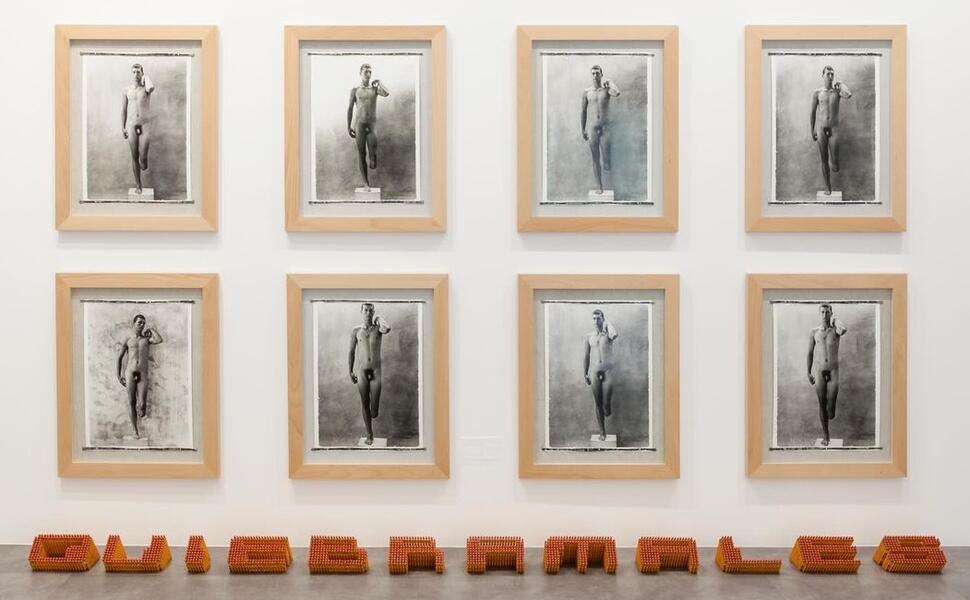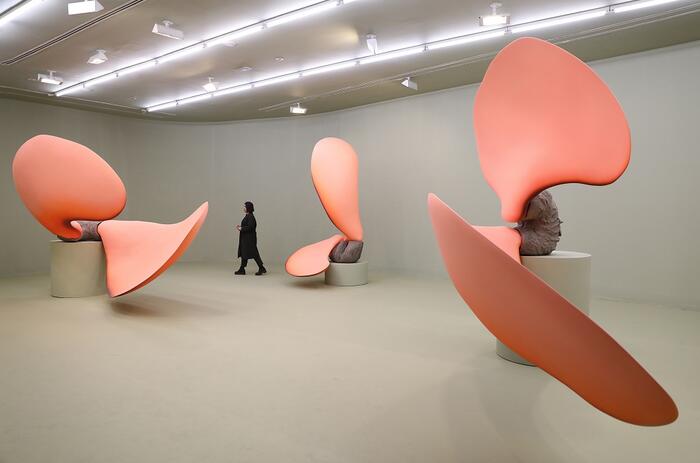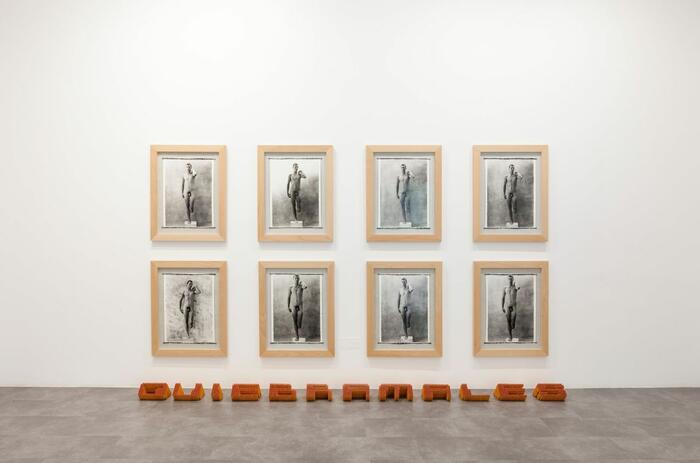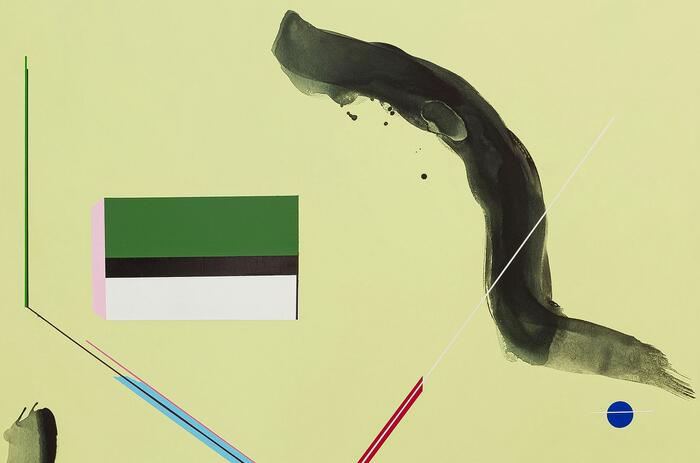QUIEBRAMALES: A PROJECT FOR EDUCATION AND SOCIAL JUSTICE
Quiebramales commemorates the twentieth anniversary of the conception of the David Quiebramales project. The exhibition at La Cometa gallery revisits the biopolitics that traverse the bodies affected by war, the structures that build (and destroy) a society, and education as a path to social justice.

In 2004, Colombian artist Miguel Angel Rojas photographically recorded in a popular roadside restaurant several columns that used the undulations of the metal roof tiles as a mold, resulting in a classically inspired structure. The proportions were imprecise, and the workmanship rudimentary; an incomplete expression of a historical moment in Western architecture. This imperfect construction, for the artist, symbolized a vernacular reading by the popular sectors of Colombian society. This led him to think about what would be the most cultured academic example of the country's architecture, and so he did a photographic session in the National Capitol, a major example of the classical and neoclassical roots of institutional architecture. Both columns, one next to the other, were evidence of two cultural levels of Colombian society mediated by the difficulty or opportunity to access knowledge. The photograph Izquierda-Derecha (2006), takes up his encounter with the popular column and the inverted neoclassical column. Here, both columns frame the submerged legs of a young soldier, to talk about how the supports of society and institutions affect the physical support of the popular body.
-
Vistas de la exposición.
Rojas' workshop was very close to the Military Hospital in Bogotá, a place that during the 1980s and early 1990s received hundreds of soldiers wounded and mutilated by landmines and Explosive Remnants of War. In military strategies, the incorporation of these devices in roads and rural areas, designed to mutilate and incapacitate, prevented the enemy's advance and "undermined" their tactical capacity. Through Caquetá (2007), a single-channel video and orthopedic prostheses, the artist shows us a young soldier cleaning the camouflage of his face with what is left of his forearms, presenting us with an overwhelming scene. In an armed conflict that for six decades conditioned the lives of people with no future possibilities, the destruction of the social fabric was immeasurable and mutilation became its image.
-
Vistas de la exposición.
Rojas creates a series of works that would become one of the most accurate and relevant reflections in art that have addressed the origin and effects of violence. As if it were a revelation, Rojas finds in the appearance of the young soldier José Antonio Ramos, whose leg was mutilated by an anti-personnel mine, an eroded youth. He then asked him to pose nude in the contraposto that characterizes Renaissance sculptures and with Michelangelo Buonarotti's David as a reference. The result was a contemporary David, defeated, with an incomplete body. The appropriation is deliberate and the power of uniting two times in the present, indisputable. But this image that returns deformed, fascinating and terrible at the same time, speaks of something more important and of the initial questioning that gave rise to Los Estudios del David (2004) and Primaria (2004-2024), where photography is mixed with the remnants of an anti-personnel mine: social inequality and lack of education are the genesis of evil.
-
Vistas de la exposición.
The work is completed with Quiebramales (2004-2024). A twelve-letter word made with graphite pencils, whose location makes us think again of the mines (in Colombia they are known perversely as "quiebrapatas"), but whose purpose now is not the annihilation of the will, but the regeneration of thought. Lee y multiplica (2013-2019), two math and writing notebooks lined with mambe and silver foil on a table, emphasize the importance of education over weapons. For combatants, the decision to join armed groups is mediated by aspects such as their permanent condition of vulnerability, difficulties in developing their identity, victimization caused by the armed conflict, non-recognition as a social group and the impossibility of accessing basic conditions and an educational system that would allow them to break the chains of poverty.
Miguel Ángel Rojas confronts violence and education as opposites of the same system, which makes of its tools, conscious mechanisms of control, and calls us to break the structures that perpetuate inequity and reproduce the patterns that have led us down a sinister path.
Quiebramales. Exhibition commemorating the twentieth anniversary of the David Quiebramales project. By the artist Miguel Ángel Rojas.
Until April 20, 2024.
La Cometa. San Lorenzo Street 11, Madrid, Spain.










